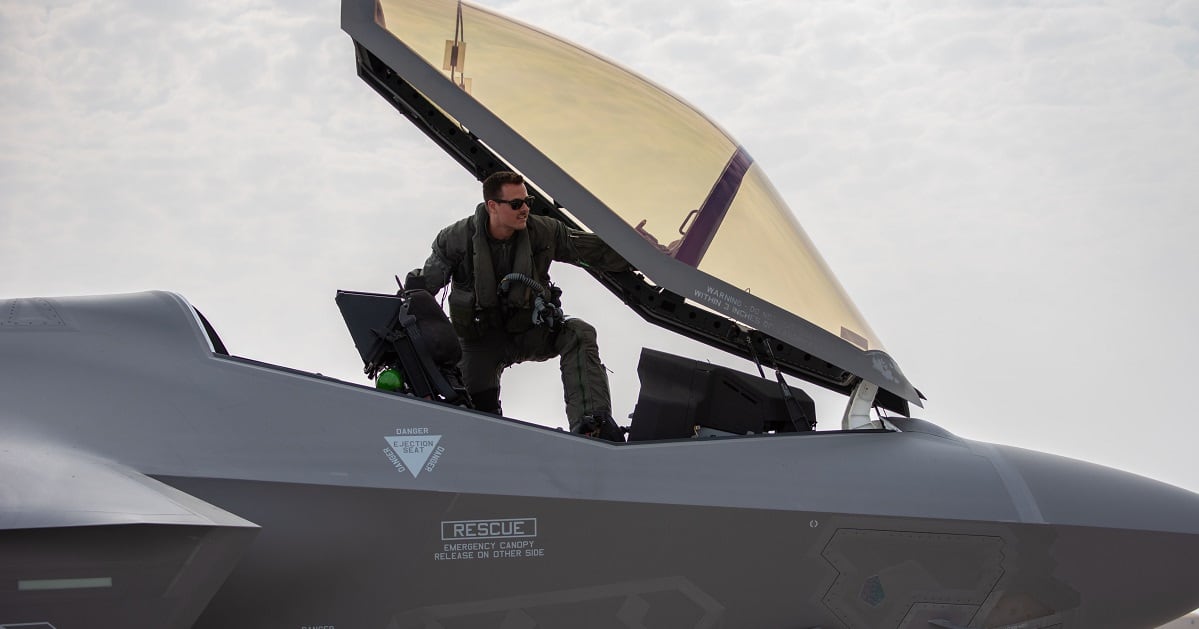On March 14, 2012, an American flag was flown aboard aircraft serial No. 10-4195 — the first flight of the last F-22 Raptor produced. The fifth-generation fighter was of uncompromised design, born of capabilities to sustain the vision of the world’s greatest air force and emphatically demonstrating that America would invest to protect its interests and counter global threats.
The flight attained an altitude of 44,000 feet, a speed of Mach 1.5, and a flight duration of 1 hour and 30 minutes, but the number that mattered for the F-22 program was 187. Less than half the U.S. Air Force and Air Combat Command’s stated requirement would be built, dangerously shortchanging the capacity necessary to provide a potent, globally deployed, asymmetric deterrent against potential adversaries — shot down by senior Pentagon leaders as a “Cold War relic” and admonishing the Air Force as having “next-war"-itis.
The program had been envisioned, in part, to allow for the timely retirement of the F-15. Now with the F-22 Raptor program terminated at 187, resources would be remapped to the new priorities of a new administration, including a “promised acceleration of the F-35.” The most advanced multirole fighter jet in the global inventory, as well as battle tested and operational, the F-35 Lightning II combines lethality, survivability and connectivity, and would allow us to ensure air superiority against the likes of China and Russia.
Instead, today’s Pentagon leadership seeks to purchase new F-15s born of yesteryear’s wars and equipped with technology more than three decades old that cannot withstand today’s challenges and are woefully unequipped to combat tomorrow’s threats.
If the Pentagon or Congress needs a refresher on the impact of not preparing for future threats, they should look no farther than the F-22 program. That decision to end production early handcuffed Air Force recapitalization efforts and weakened capacity at the very time adversaries were drawing up plans to close the gap with Western forces.
Pentagon leadership downplayed Chinese capabilities, declaring the world would have no similar fifth-generation plane until about 2025. Today, China has a fifth-generation capability; the only question that remains is how many fifth-generation fighters they will have.
Russia, meanwhile, is working on equipping its fifth-generation stealth fighter force with nuclear-capable hypersonic missiles. On a parallel track, tensions with Iran continue to rise in the Persian Gulf while North Korea remains an unstable menace that could wreak havoc in the Pacific at a moment’s notice.
Yet, at a time when it is essential to counter these growing global threats with sufficiency in both capability and capacity, Pentagon leaders are repeating mistakes of the past. Rather than reestablishing the planned acceleration of F-35 production capacity after years of sequestration caps, the Department of Defense is requesting numbers far lower than needed in order to fund an F-15EX.
With Patrick Shanahan withdrawing as the defense secretary nominee, Pentagon leaders have the opportunity to set the record right. New leaders must signal that continuing to invest in aircraft lacking the capability to survive in the 21st century is repeating an egregious mistake and is cannibalizing the F-35 production capacity already in place.
Congress must increase its funding of the free world’s one and only fifth-generation fighter jet in production today to allow the United States to remain ahead of its adversaries. Anything short of that is a potentially deadly mistake that we cannot afford to make.
Retired Gen. John D.W. Corley served as the vice chief of staff with the U.S. Air Force. He was a four-star commander of Air Combat Command and the air component commander for U.S. Joint Forces Command. He was also the principal deputy, assistant secretary of the Air Force for acquisition.




